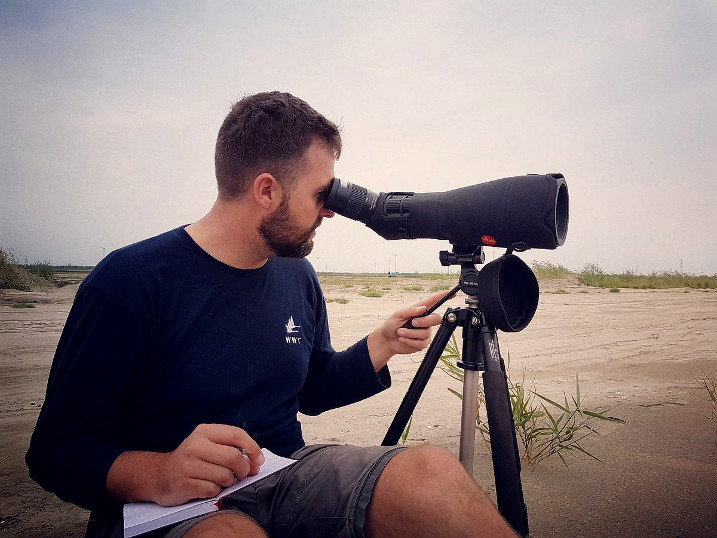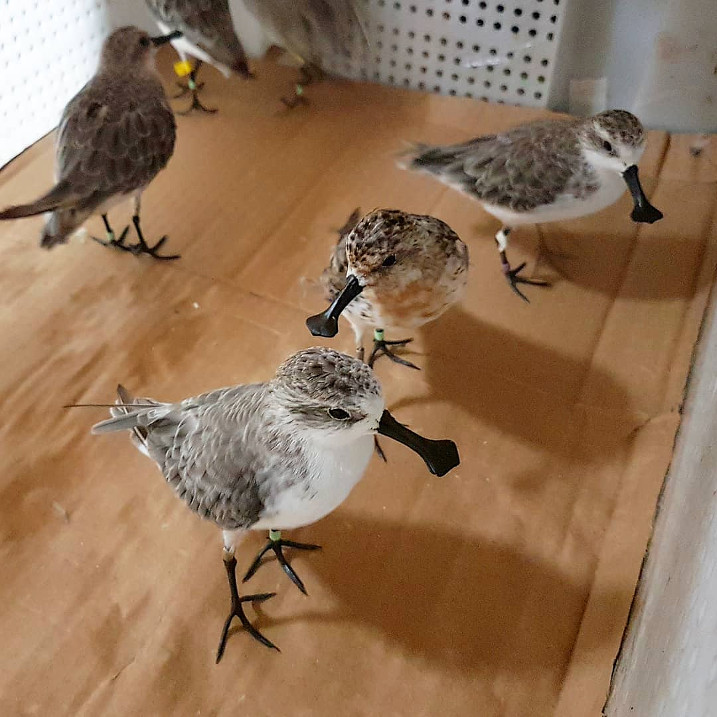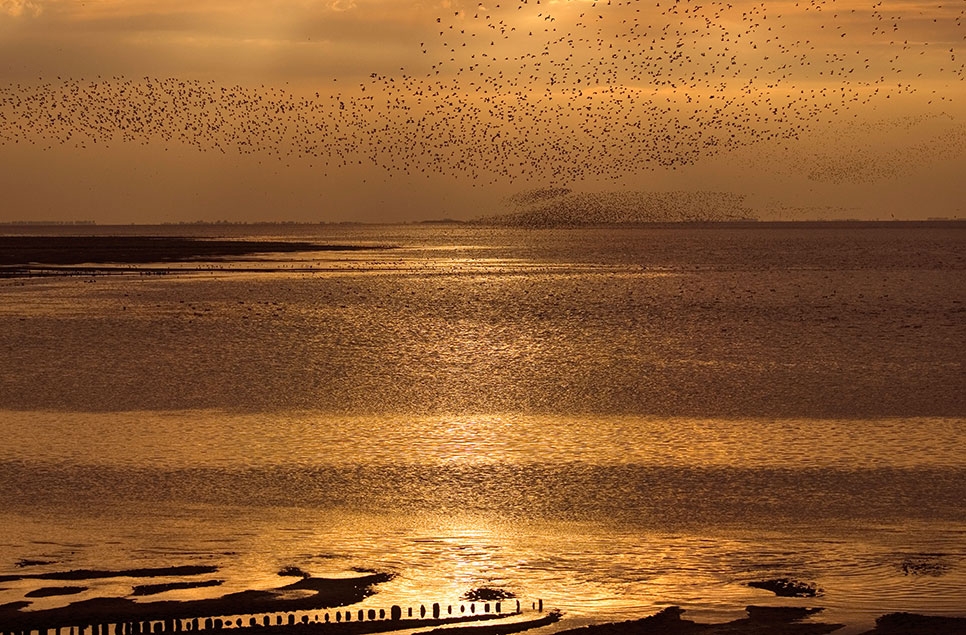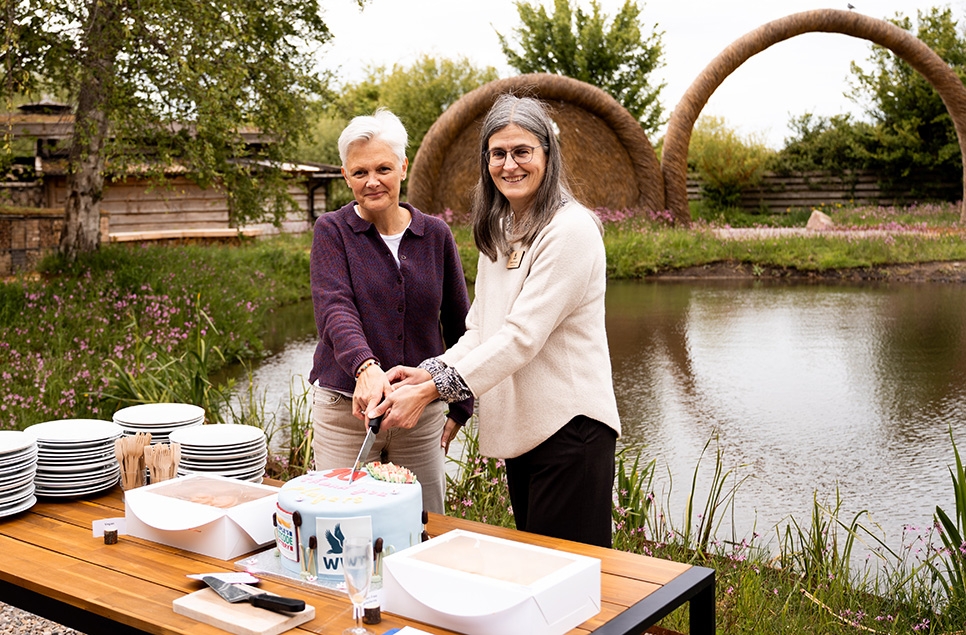'Message in a bottle' bird found by friend over 3000 miles away

A spoon-billed sandpiper reared by a WWT conservationist in Russia was sighted by a friend in China just weeks later.
The young bird was identified in Jiangsu over 3000 miles from the Russian east coast where it was raised by aviculturalist Jodie Clements. Jodie, working with the Birds Russia field team, looked after the spoonie, known as ‘White 4H’ after the colour and code on its leg flag, during a field trip in August.

Amazingly, it was picked up by teammate Kane Brides while monitoring birds in China a month after being released into the wild.
Kane said:
I can’t believe we came across White 4H which my mate Jodie had helped care for four weeks earlier, in a completely different country. It’s like finding a message in a bottle!
Kane, WWT’s Monitoring Officer, made the discovery while surveying shorebirds on the Jiangsu coast of China, a key site on the East Asian - Australasian Flyway.
Accompanied by an international team of conservationists from the UK, New Zealand, Hong Kong and China, they caught a total of 15 spoon-billed sandpipers and sighted 100 of the Critically Endangered birds in one big flock of waders. At one point, they had six spoonies together, comprising 1% of the total population.

A handrearing – known as headstarting - programme for spoon-billed sandpipers has been underway in Meinypil’gyno, Russia since 2012, involving specialists collecting eggs from incubating birds in the wild, hatching and hand-raising the chicks in captivity to fledging age, and releasing the birds back into the wild.
Kane added:
This just goes to show that headstarting is working and that it is buying time for the species.
“It appears that headstarted birds are surviving as well as their wild counterparts. There’s a lot to be positive about.
The group also caught and applied rings to 1,891 shorebirds spanning 33 species. These included the endangered Far Eastern curlew and the Nordmann’s greenshank.
The East Asian - Australasian Flyway is incredibly important for so many species of waders. By increasing the number of spoon-billed sandpipers and other waterbirds that are identifiable by rings along the flyway, conservationists can better track their movements, survival rates and pick up other valuable insights that will help them better protect at-risk species.



